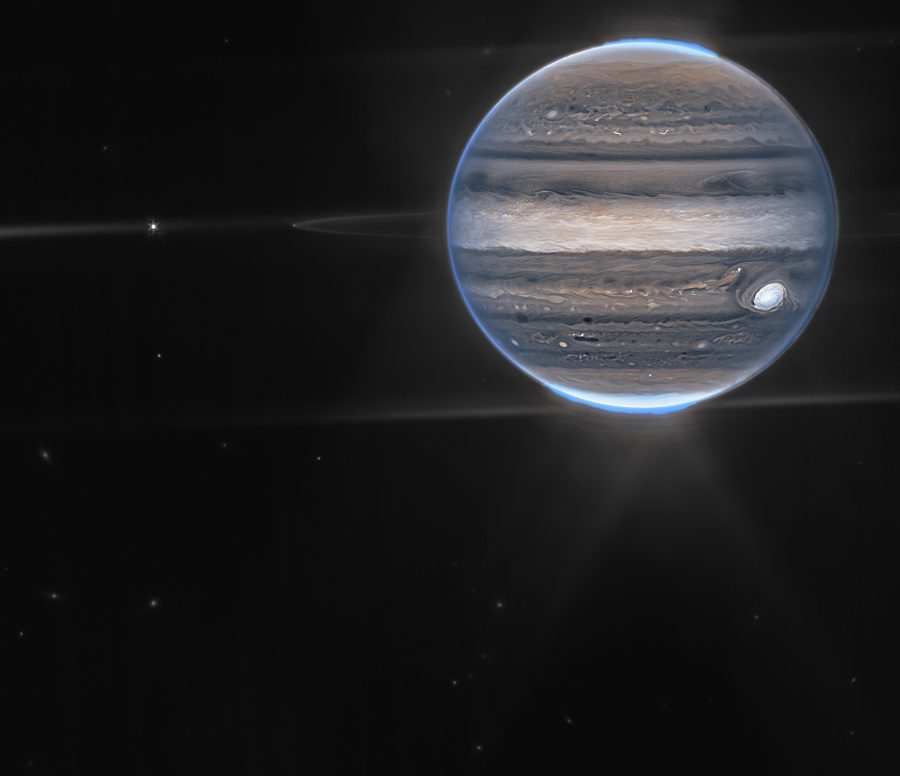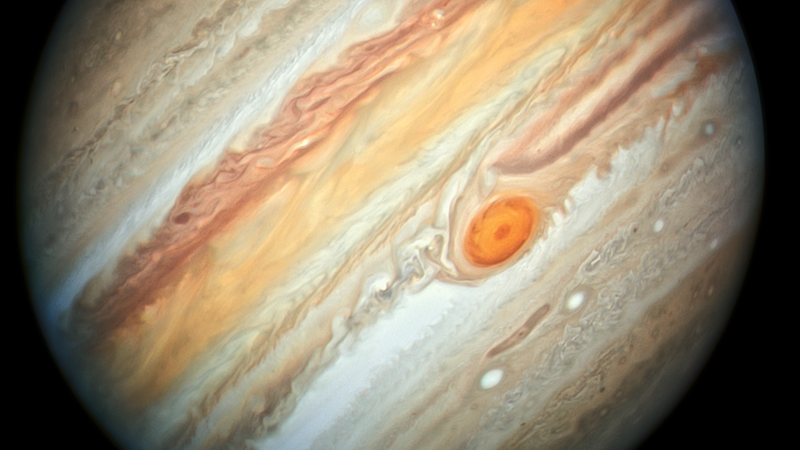Having launched less than a year ago, the James Webb Space Telescope (JWST) is already proving to be one of the best investments that NASA, the European Space Agency and the Canadian Space Agency have made.
In July, the first images captured by JWST were released and they are incredible. Now, the trio of space agencies have released more images captured by the observatory, this time of Jupiter and its auroras.
The images that were shared this week come from the observatory’s Near-Infrared Camera (NIRCam). This camera has three specialised filters that highlight different details of the gas-giant. As the light the camera is capturing is infrared, the light has been mapped to the visible spectrum so that we can see it.

“This image was created from a composite of several images from Webb. Visible auroras extend to high altitudes above both the northern and southern poles of Jupiter. The auroras shine in a filter that is mapped to redder colors, which also highlights light reflected from lower clouds and upper hazes. A different filter, mapped to yellows and greens, shows hazes swirling around the northern and southern poles. A third filter, mapped to blues, showcases light that is reflected from a deeper main cloud. The Great Red Spot, a famous storm so big it could swallow Earth, appears white in these views, as do other clouds, because they are reflecting a lot of sunlight,” writes the ESA.
Our favourite image of the pair, however, is a wide-field view of Jupiter together with its moons, Amalthea and Adrastea.

What is the point of these images aside from great backgrounds for our desktop? Astronomers hope that these images will give them greater insight into the inner life of Jupiter and potentially its several moons as well.
You can find the full sizes versions of the images above here and here.
[Image – NASA, ESA, A. Simon (Goddard Space Flight Center) and M.H. Wong (University of California, Berkeley)]

